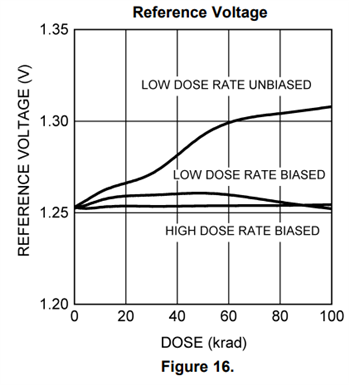Hi, I am trying to understand the Delta and Post Radiation Data, in particular for Vref, for worst case tolerances of the output voltage.
The orderable device that we will be using is 5962R0722962VZA.
- For the post radiation, the max vref becomes 1.45V. How much of this change is seen immediately, so that we can compensate with altering the set resistor values?
- How do the Delta parameters play into this?
For some additional context, the 1.45V is potentially introducing >+15% output voltage relative to the nominal 1.25V. This is a significant (and intolerable) amount of tolerance, and I am looking how to compensate out the error. Thank you.


